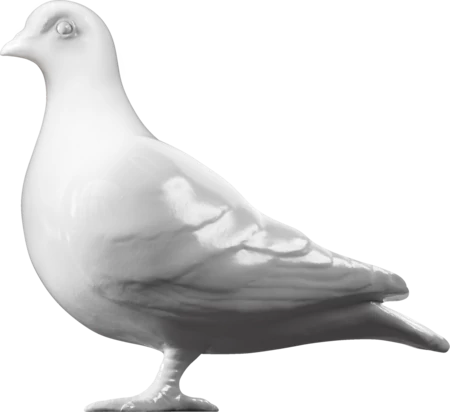Social History — C. 1850-1920
Horse brass
This horse brass would have been worn by a horse working for the Bass brewery company at City Basin on the Regent's Canal. The company had been founded in Burton upon Trent by Wililam Bass in 1777 and by the middle of the 19th century it was supplying beer throughout Britain and the Empire.
In the late 18th and early 19th centuries canals were one of the main routes for transporting goods around Britain. Canal transport declined with the expansion of the railway system in the second half of the 19th century.City Basin was one of a number of widened sections (known as 'basins') along the Regent's Canal where boats could moor at wharves to unload and load goods.
The origins of horse brasses are unknown, but from the middle of the 19th century they became increasingly popular as decorations fixed to working horses' harnesses. During the 19th and early 20th centuries horses adorned with brasses were an everyday sight on London’s streets, reflecting the central role they played in London’s life and economy as the main method of short distance transport. Common designs included suns, wheat, horses, swans and heraldic images.
Horse brasses reached a peak in popularity just before World War I but during the 1920s, as motor vehicles replaced horses, they began to decline. By the 1950s they had all but disappeared from London’s streets. During their peak, however, companies often had their own brasses marked with their name. Railway and brewery company brasses were particularly common.
Royal commemorative brasses were also popular, theE first ones being produced to mark Queen Victoria's Golden Jubilee in 1887. Today commemorative horse brasses are still produced, although as souvenirs rather than as decorations for working horses. In 2011 the National Horse Brass Society produced a brass to commemorate
the wedding of Prince William and Catherine Middleton.
Early brasses were heavy as they were cast in moulds, and were attached to the harness with sharp studs. Later, towards the 1880s, brasses were stamped out of sheet brass like this one and were lighter. They were most commonly attached to the harness with loops known as ‘hangers’ or with wires or studs on the reverse.
- Category:
- Social History
- Object ID:
- NN3199
- Object name:
- horse brass
- Object type:
- Artist/Maker:
- —
- Related people:
- Related events:
- Related places:
- Production date:
- c. 1850-1920
- Material:
brass
- Measurements/duration:
- H 89 mm, W 110 mm (overall)
- Part of:
- —
- On display:
- —
- Record quality:
- 100%
- Part of this object:
- —
- Owner Status & Credit:
Permanent collection
- Copyright holder:
digital image © London Museum
- Image credit:
- —
- Creative commons usage:
- —
- License this image:
To license this image for commercial use, please contact the London Museum Picture Library.

